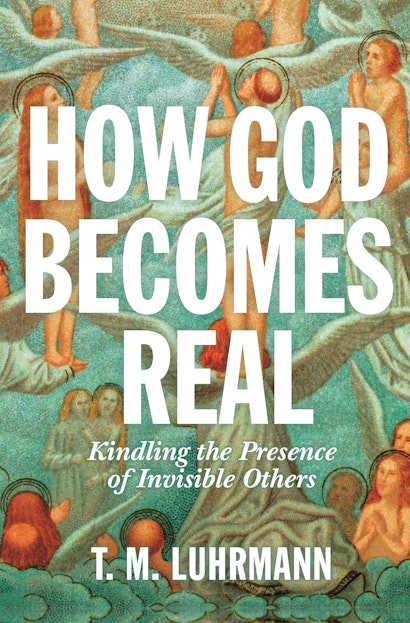The most important question to ask about religion is not why but how. “Why” is a skeptic’s question—a puzzle around the seemingly absurd ideas (a talking snake, a virgin birth) that we find in religions. If we start not with the puzzle of belief, but with the question of whether the effort people invest in their faith helps them to feel that their gods and spirits are real, we are forced to focus on what people do when they worship gods and spirits, and on how those practices themselves might change those who do them. And once we allow ourselves to ask whether people everywhere need to persuade themselves that their gods are real, religious rituals suddenly make more sense. After all, if spirits are believed to be unproblematically present—simply there, responsive and available—why do you need an all-night drumming ceremony to call them forth? If God is always present and aware, why does anyone need to pray?
If we start not with the puzzle of belief, but with the question of whether the effort people invest in their faith helps them to feel that their gods and spirits are real, we are forced to focus on what people do when they worship gods and spirits, and on how those practices themselves might change those who do them.
How God Becomes Real describes what I know from my work as an anthropologist about the ways through which invisible others come to feel real to humans. I call these acts of real-making “kindling,” because they are small events, like the twigs and tinder from which a great fire can be lit, that shape where and how the fire burns. They are ways of using the mind so that an invisible other can be grasped—sometimes more vividly, sometimes more indirectly, but in ways that helps someone to hold on to the possibility of presence.
I see, for instance, that certain kinds of narrative kindles the realness of spirits. These are detailed stories, for sure, because detail makes what described to feel more present. If religion is a narrative that shifts attention away from the ordinary, detail is the narrative mechanism that makes this shifting of attention possible. The successful narrative creates a paracosm—a private-but-shared imagined world sufficiently rich in detail that people become engaged and can return to the stories again and again, exploring them from different angles, reliving different moments, recasting them as if they were there, even adding new chapters to the story. The narratives also need to set out rules about who shares the paracosm, how to know when gods and spirits are present, and how they interact.
Talent and training—what someone does and what they bring to what they do—make these stories more vivid and increase the chance that people will experience the invisible other in sensory ways. People who are able to become absorbed in what they imagine are more likely to experience an invisible other more vividly. People who practice being absorbed in what they imagine in prayer or ritual are also more likely to experience that invisible other more vividly. Absorption blurs the boundary between the inner world and the outer world, which makes it easier for people to experience an invisible other as present in a way they feel with their senses.
The evidence for presence often comes from a domain in-between the mind and the world, between what a person’s inner awareness and the sensible world—the thought that does not feel like yours, the voice that feels whispered on the wind, the person who feels there and yet beyond the reach of sight.
The way people think about their minds also matters. The evidence for presence often comes from a domain in-between the mind and the world, between what a person’s inner awareness and the sensible world—the thought that does not feel like yours, the voice that feels whispered on the wind, the person who feels there and yet beyond the reach of sight. The way people in a particular social world represent the mind itself—the way they map the human terrain of thinking, feeling, intending, desiring—shapes the way they attend to these odd moments so that the moments feel more or less sensory, more or less external, more or less real.
Those moments matter because they become evidence, for the person of faith, that does not rely on the testimony of others. I see that these moments are patterned, too, as if a person’s sense of an invisible other’s presence is not only kindled from the tinder of these small practices of attention, but kindled in a particular way, shaped by local culture.
I see that these practices change people. Prayer practice changes even those who do not believe in gods. Prayer, perhaps the most common religious practice, is a method of attending to thought: an act of thinking about thinking. Prayer shifts the way those who pray attend to their own thoughts the way cognitive behavioral therapists teach their clients to alter the attention they pay to theirs.
As people practice, as the invisible other becomes more real to them, gods and spirits respond. The most powerful but also most perplexing observation I have made in my work is that these human practices enable people to experience gods and spirits as genuinely autonomous—as agents in their lives, whether or not those gods and spirits are, as a skeptic might say, real. Through these practices, people of faith learn to identify gods and spirits as responding so that responsiveness comes to feel like a relationship. Those relationships have many of the back and forth qualities that all relationships do. A god can startle someone. People experience their relationship as developing, growing, becoming closer and more distant. Like all intimate relationships, these relationships change people.
That is why it is so important to think about religion as not a puzzle about belief alone. The deep anthropological puzzle about the human involvement with gods and spirits is how people come to feel intensely that invisible beings matter to their lives—how the invisible world comes close to humans and becomes alive for them.
Tanya Marie Luhrmann is the Watkins University Professor at Stanford University, where she teaches anthropology and psychology. Her books include When God Talks Back: Understanding the American Evangelical Relationship with God (Knopf). She has written for the New York Times, and her work has been featured in the New Yorker and other magazines. She lives in Stanford, California.

